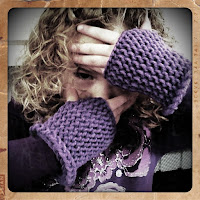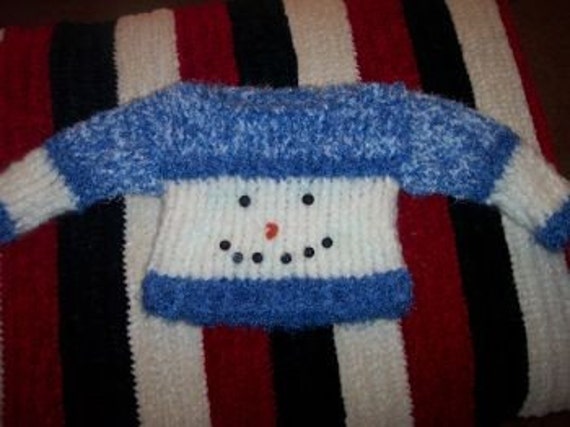Free Patterns and Projects for the Knifty Knitter Spool Loom

The first thing you should know about a spool loom is that it has 2 ends and both may be used for knitting. There is a wide end and a narrow end. Spool looms are generally used for knitting long ropes or
cables. For example, the strap of a loom knitted purse is often made
with the spool loom. Here are a few patterns to get you started using
your Knifty Knitter spool loom, including some ideas you wouldn't
expect, such as a Valentine's Day card and a scarf!
Braided Tube Scarf Pattern
for the Knifty Knitter Spool Loom
 This
scarf is made by knitting 5 long tubes on the spool loom and braiding
them together along with some fun fur. It adds depth and dimension to
the finished scarf. You can experiment by mixing and matching the
knitted tubes in different colors. I've seen one done in the primary
blue and yellow. It was adorable. This can be a very long project for a
beginner, because it takes a while to make all the tubes.
This
scarf is made by knitting 5 long tubes on the spool loom and braiding
them together along with some fun fur. It adds depth and dimension to
the finished scarf. You can experiment by mixing and matching the
knitted tubes in different colors. I've seen one done in the primary
blue and yellow. It was adorable. This can be a very long project for a
beginner, because it takes a while to make all the tubes.Skill Level: Beginner
You will need:
* Knifty Knitter Pom Pom and Tassel Maker
* Knifty Knitter Spool Loom
* Knifty Knitter hook
* Yarn Needle
* 3 or 4 skeins of worsted weight yarn
* fun fur
Braided Tube Scarf for the Spool Loom
This is the Knifty Knitter spool loom by Provo Craft. If you haven't
seen one, you may not realize that they have 2 sides with pegs. One end
is slight smaller than the other, so you can make 2 different widths of
knit on the same loom. The smaller side can also be used to make the
thumb of a mitten or glove.
Knifty Knitter 4-1/2 Inch X 8-1/2 Inch Spool Loom

The cords around the edge of this precious Valentine's day card are knitted on the Knifty Knitter spool loom. The Valentine is a creation of Brenda at the "Loom Lore" blog.
Skill Level: Beginner
You will need:
*spool loom
*several colors worsted weight yarn
*a Knifty Knitter hook
*card stock
*craft glue
Lacy Valentine Scarflet from Loom Lore
Knifty Knitter 4-1/2 Inch X 8-1/2 Inch Spool Loom
Spool Loom Valentine
with the Knifty Knitter Spool Loom by Provo Craft

The cords around the edge of this precious Valentine's day card are knitted on the Knifty Knitter spool loom. The Valentine is a creation of Brenda at the "Loom Lore" blog.
Skill Level: Beginner
You will need:
*spool loom
*several colors worsted weight yarn
*a Knifty Knitter hook
*card stock
*craft glue
Lacy Valentine Scarflet from Loom Lore
More Free Patterns for Specific Looms
-
Knifty Knitter Blue Round Loom Patterns
The Knifty Knitter blue round loom makes knitting hats for preemies and dolls easy and fast. Even if you have never knitted before, you will be able to lear... -

Knifty Knitter Adult Hat Loom
The first set of knitting looms that I bought in 2008 were the Knifty Knitter brand by Provo Craft. After knitting for a while, I soon learned that there ar... -

Knifty Knitter Pink Long Loom Patterns
The Knifty Knitter 10 inch long pink loom is popular for a couple of reasons. It's the smallest of the long looms, so it travels easily in a bag or purse. Y... -

Knifty Knitter Blue Long Loom Patterns
This is the very longest Knifty Knitter brand loom currently made. I use it often for making blankets. It measures 22 inches long. I use it to knit both sin... -
Knifty Knitter Red Round Loom Patterns
The Knifty Knitter red round loom is for you if you want to knit hats for young children. This loom makes knitting a hat for a baby, or toddler, a breeze. Y... -

Knifty Knitter Rectangle Loom Patterns
You can knit quickly and easily with the Knifty Knitter Rectangle loom. It is designed specifically for making scarves, blankets, and other types of double... -

Knifty Knitter Straw Loom Instructions
The Knifty Knitter straw weaver made by Provo Craft is not so much a knitting loom, as it is a weaving tool. If you've seen them, but you aren't quite sure... -

Knifty Knitter Green Long Loom PatternS
The long green Knifty Knitter loom made by Provo Craft is 18 inches long. You can buy it individually, or as part of the long loom set. There are some free...
The Knifty Knitter Facebook Fan Page
Visit and like the fan page to get free patterns in your Facebook feed.






 When knitting a flat panel with the Knifty Knitter loom, you stop and reverse direction at each end of the loom. This is indicated by the red arrows in the photo. Each time you reach the red arrow, you stop and knit back across the loom from the direction in which you just came. The result is a flat panel with a single layer of knit.
When knitting a flat panel with the Knifty Knitter loom, you stop and reverse direction at each end of the loom. This is indicated by the red arrows in the photo. Each time you reach the red arrow, you stop and knit back across the loom from the direction in which you just came. The result is a flat panel with a single layer of knit. I placed a photo of circular knit here, to show you another possible method of knitting on the long looms. To knit a tube, or circular knit, you go continuously around the loom in the same direction, never reversing. You spiral until the knit reaches the desired length.
I placed a photo of circular knit here, to show you another possible method of knitting on the long looms. To knit a tube, or circular knit, you go continuously around the loom in the same direction, never reversing. You spiral until the knit reaches the desired length. Because the finished knit is determined by the method of knitting, not the shape of the loom, it is possible to knit a flat panel on a round loom. Knit around the loom until you reach the stop point. Then reverse direction and knit back across to the other stop point, instead of spiraling around in the same direction. Do this repeatedly stopping and reverse directions at the stop points. This creates a flat panel knit on the round loom.
Because the finished knit is determined by the method of knitting, not the shape of the loom, it is possible to knit a flat panel on a round loom. Knit around the loom until you reach the stop point. Then reverse direction and knit back across to the other stop point, instead of spiraling around in the same direction. Do this repeatedly stopping and reverse directions at the stop points. This creates a flat panel knit on the round loom. There is one more method of knitting a flat panel on the Knifty Knitter looms. It can be done only on the long looms. It creates a flat panel of knit with a double thickness, such as a heavy blanket, or a scarf. It is created by wrapping the loom up and down using both top and bottom, then knitting off in a back and forth motion across the loom. The
There is one more method of knitting a flat panel on the Knifty Knitter looms. It can be done only on the long looms. It creates a flat panel of knit with a double thickness, such as a heavy blanket, or a scarf. It is created by wrapping the loom up and down using both top and bottom, then knitting off in a back and forth motion across the loom. The 


 This super cute snowman sweater pattern is available at Etsy.com, but it's free. You'll need the green round loom.
This super cute snowman sweater pattern is available at Etsy.com, but it's free. You'll need the green round loom. This pattern comes from the Loom Lore blog where she explains how to make these stuffed snowmen with the flower loom. If you have some extra time, she also has some adorable holiday angels on this blog that can be loom knitted also.
This pattern comes from the Loom Lore blog where she explains how to make these stuffed snowmen with the flower loom. If you have some extra time, she also has some adorable holiday angels on this blog that can be loom knitted also.





















